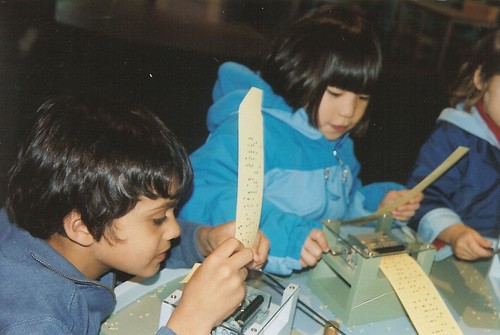And on the home front: Sylvia is playing violin on “The Nutcracker March,” in the holiday performance by Overture Strings in a couple of weeks. The kid that went along with us to see the New York City Ballet’s performance with Balanchine’s choreography at Lincoln Center is going to be a candy cane in her dance class performance in Point Pleasant, N.J. We just got an email from a friend that her child won’t be able to come over because she will be rehearsing to be a sheep in a production of the Nutcracker in Montclair. Everywhere. And maybe that’s why Jeremy and I felt we couldn’t find an emotional connection with the music and dance, as Jeremy noted in his blog, readin.com, and that the fun was watching the girls watch.
RECOMMENDED NUTCRACKER READING:
The week before the show, we looked at two books with the Nutcracker story.
- The first, with the original E.T.A. Hoffmann story, translated by Ralph Manheim, is illustrated by the one and only Maurice Sendak. Sendak designed 180 costumes for the Seattle ballet's Nutcracker in 1981. The illustrations come from that performance as well as additional illustrations he made for the story lines that are not be included in the two act ballet. It is refreshing to read in the introduction that at he resisted the project at first because, “Who in the world needed another Nutcracker? The mandatory Christmas tree and Candyland sequences were enough to sink my spirits completely.” He returned to the source, the original story written in 1816, “The Nutcracker and the Mouse King,” and then researched why the version we see today is so bland compared to the complicated dark narrative of the original. He blames it on the version of the story that was popularized by Alexandre Dumas, and then simplified further in the production by Alexandrovitch Vservolojsky, director of the Imperial Theater in St. Petersburg at around the turn of the last century. Tchaikovsky was disappointed in the scenario and tried to compose a score that honed closer to Hoffmann – but what was missing from the written scenario – and man, is this evident when you watch the ballet – is the sub-plot – the real second act. So, if you want the real deal, take a look at Hoffmann/Sendak. (All ages)
- A new picture book that is representative of what you’ll see on stage, as well as a quick read, is “The Nutcracker” by Susan Jeffers with her beautiful illustrations and a cover with sparkles in Marie’s hair. (Ages 3-8)



